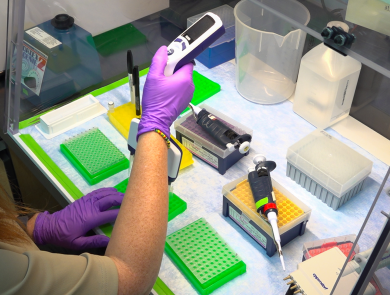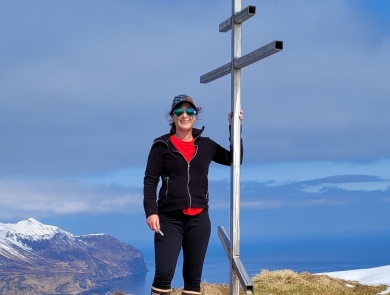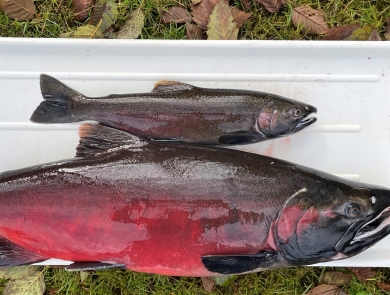About Us
Abernathy FTC was built to mitigate for the impacts of Bonneville Dam on Pacific salmon. Today, Abernathy FTC has three research units: Conservation Genetics, Nutrition & Physiology, and Quantitative Ecology & Technology, that conduct applied studies and provide technical assistance and expertise to internal and external partners and stakeholders. These programs provide technical expertise to assist in conservation, mitigation, Tribal trust responsibilities, restoration, and recovery efforts for fishery resources. This is accomplished through the development and evaluation of new methods, concepts, and systems, as well as the application of existing methods and concepts to emerging issues. All of Abernathy FTC's research involves collaborations with various partners: other FWS offices and resource programs as well as various external partners (other federal agencies, state agencies, Tribal governments, and non-governmental organizations).
What We Do
Our work falls under three distinct categories:
CONSERVATION GENETICS
Genetics has become indispensable for the conservation of fish and wildlife because it provides information and tools that can guide management. The FWS and its partners routinely use genetic information in the decision making process. Questions frequently posed to Abernathy FTC staff include: What species is this? What population did this individual come from? What are the genetic risks or benefits of changing hatchery protocols? How divergent is this population? Where are boundaries between populations of this species? How genetically healthy is this population or species? How can genetics help me? What does this genetic study mean?
NUTRITION & PHYSIOLOGY
Abernathy FTC provides information and tools to inform the rearing of Pacific salmon and steelhead in the Pacific and Pacific Southwest Regions. We provide fish nutrition related data and methods and protocols to our regional hatcheries. We also give assistance to tribal and state hatcheries and national hatcheries in other regions. Another critical area that requires nutrition input is the raising of threatened and endangered (T&E) aquatic species in refugia. Often little to nothing is known about these species' nutritional requirements. Questions arising from nutritional issues include: Is the quality of the feed good and good for the fish? What do these results mean? How do we determine what to feed fish or other aquatic animals we've brought into refugia? How can I feed this fish for the best result? Preparing for the future, are these alternative ingredients appropriate for Pacific salmon and steelhead? How do feeds impact water quality and how can we mitigate for phosphorous and solids loss in hatchery effluent?
QUANTITATIVE ECOLOGY & TECHNOLOGY
The QET program conducts research to support conservation and management of aquatic resources. In practice, program activities and interests are driven by management questions whose answers require interdisciplinary research and collaboration and utilize a variety of ecological and modeling data. Recent and current projects deal with many of the key issues in fishery conservation, such as the role of hatcheries in conservation and differences between wild and hatchery salmon, effects of migration barriers or loss of connectivity, invasive species invasive species
An invasive species is any plant or animal that has spread or been introduced into a new area where they are, or could, cause harm to the environment, economy, or human, animal, or plant health. Their unwelcome presence can destroy ecosystems and cost millions of dollars.
Learn more about invasive species , climate change climate change
Climate change includes both global warming driven by human-induced emissions of greenhouse gases and the resulting large-scale shifts in weather patterns. Though there have been previous periods of climatic change, since the mid-20th century humans have had an unprecedented impact on Earth's climate system and caused change on a global scale.
Learn more about climate change , and how to make decisions when hard data are sparse. Types of questions we work on include: What are the differences between Pacific salmon reared in a hatchery vs. in the wild? How do human-made barriers affect fish populations? What can be done to limit ecological damage from non-native species? How do we manage fish populations under changing environmental conditions? How can managers make better decisions when data are sparse?
Location and Contact Information
- Abernathy Fish Technology CenterView Details1440 Abernathy Creek Road Longview, WA 98632-9764

























